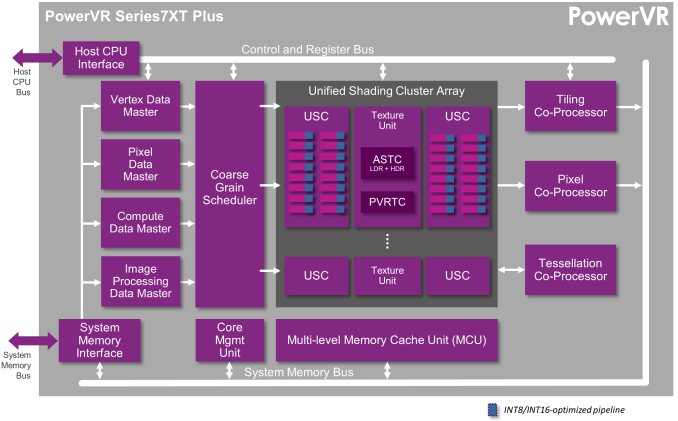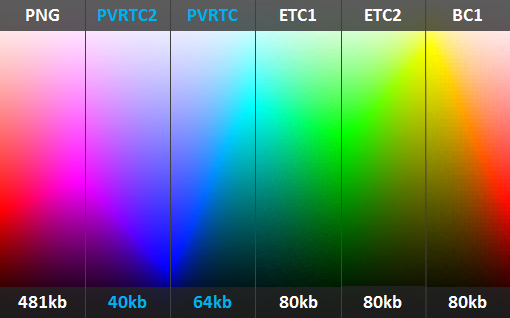Apple To Develop Own GPU, Drop Imagination's GPUs From SoCs
by Ryan Smith on April 3, 2017 6:30 AM ESTImagination: Patents & Losing an Essential Contract
As for Imagination, the news is undoubtedly grim, but not necessarily fatal. Imagination has never hidden the fact that Apple is their most important customer – even labeling them as an “Essential Contract” in their annual report – so it’s no secret that if Apple were to leave Imagination, it would be painful.
By the numbers, Apple’s GPU licensing and royalties accounted for £60.7M in revenue for Imagination’s most recent reporting year, which ran May 1st, 2015 to April 30th, 2016. The problem for Imagination is that this was fully half of their revenue for that reporting year; the company only booked £120M to begin with. And if you dive into the numbers, Apple is 69% of Imagination’s GPU revenue. Consequently, by being dropped by Apple, Imagination has lost the bulk of their GPU revenue starting two years down the line.
| Imagination Financials: May 1st, 2015 to April 30, 2016 | |||
| Company Total | GPUs Total | Apple | |
| Revenue (Continuing) | £120M | £87.9M | £60.7M |
| Operating Income | -£61.5M | £54.7M | |
The double-whammy for Imagination is that as an IP licensor, the costs to the company of a single customer is virtually nil. Imagination still has to engage in R&D and develop their GPU architecture and designs regardless. Any additional customer is pure profit. But at the same time, losing a customer means that those losses directly hit those same profits. For the 2015/2016 reporting year, Apple’s royalty & licensing payments to Imagination were greater than the profits their PowerVR GPU division generated for the year. Apple is just that large of a customer.
As a result, Imagination is being placed in a perilous position by losing such a large source of revenue. The good news for the company is that their stakes appear to be improving – if slowly – and that they have been picking up more business from other SoC vendors. The problem for Imagination is that they’ll need a drastic uptick in customers by the time Apple’s payments end in order to pay the bills, never mind turning a profit. Growing their business alone may not be enough.
Which is why Imagination’s press release and the strategy it’s outlining is so important. The purpose of Imagination’s release isn’t to tell the world that Apple is developing a new GPU, but to outline to investors and others how the company intends to proceed. And that path is on continued negotiations with Apple to secure a lesser revenue stream.
The crux of Imagination’s argument is that it’s impractical for Apple to develop a completely clean GPU devoid of any of Imagination’s IP, and this is for a few reasons. The most obvious reason is that Apple already knows how Imagination’s GPUs work, and even though Apple wouldn’t be developing a bit-for-bit compatible GPU – thankfully for Apple, the code app developers write for GPUs operates at a higher level and generally isn’t tied to Imagination’s architecture – those engineers have confidential information about those GPUs that they may carry forward. Meanwhile on the more practical side of matters, Imagination has a significant number of GPU patents (they’ve been at this for over 20 years), so developing a GPU that doesn’t infringe on those patents would be difficult to do, especially in the mobile space. Apple couldn’t implement Imagination’s Tile Based Deferred Rendering technique, for example, which has been the heart and soul of their GPU designs.
However regardless of the architecture used and how it’s designed, the more immediate problem for Apple – and the reason that Imagination is likely right, to an extent – is replicating all of the features available in Imagination’s GPUs. Because Apple’s SoCs have always used GPUs from the same vendor, certain vendor-specific features like PowerVR Texture Compression (PVRTC) are widely used in iOS app development, and Apple has long recommended that developers use that format. For their part, Apple is already in the process of digging themselves out of that hole by adding support for the open ASTC format to their texture compression tools, but the problem remains of what to do with existing apps and games. If Apple wants to ensure backwards compatibility, then they need to support PVRTC in some fashion (even if it’s just converting the textures ahead of time). And this still doesn’t account for any other Imagination-patented features that have become canonized into iOS over time.
Consequently, for Imagination their best move is to get Apple to agree to patent indemnification or some other form of licensing with their new GPU. For Apple it would ensure that nothing they do violates an Imagination patent, and for Imagination it would secure them at least a limited revenue stream from Apple. Otherwise Imagination would be in a very tight spot, and Apple would face the risk of patent lawsuits (though Imagination isn’t making transparent threats, at least not yet).












144 Comments
View All Comments
lilmoe - Monday, April 3, 2017 - link
Shots fired! Yikes.lilmoe - Monday, April 3, 2017 - link
Looks like the future of Apple is ARM, even for their laptops and PCs. With computing relying less and less on CPUs and more on dedicated processing units, the in-house GPU thing makes sense.This is more about reducing cost and turning the personal computing industry, as we know it, into an appliance-like industry. Instead of making a do-it-all device, it's more profitable designing and selling dedicated hardware for dedicated/specific tasks. Pretty darn obvious if you ask me.
Tangey - Monday, April 3, 2017 - link
Surely this is entirely different from Apple's current CPU situation. They are still paying ARM an Arch license are they not ? Whereas IMG is saying Apple's view is that they won't be paying for anything from IMG.Tangey - Monday, April 3, 2017 - link
Also the statement says Apple won't be using them in NEW products in 15-24 months. That must surely mean new designs. By inference that means IMG should still be in any new products launched in the next 15 ish months. Reading between the lines it looks like Sept 2018 is being targetted.nathanddrews - Monday, April 3, 2017 - link
New Apple GPU codename: Shimpi.tipoo - Monday, April 3, 2017 - link
AMD GPUs have the Wasson unit, now Apples GPUs will have the Shimpi Unit.Dennis Travis - Tuesday, April 4, 2017 - link
Shimpi sure sounds familar! :D Grinlilmoe - Monday, April 3, 2017 - link
I wouldn't be too surprised to see them move away from ARM in the longer term as well. Maybe a new uArc announcement is on the horizon.lilmoe - Monday, April 3, 2017 - link
I didn't say this right at first, the future isn't "ARM" per se, but more like in-house ARM _like_.ImSpartacus - Monday, April 3, 2017 - link
Are you suggesting that Apple will build its own isa?!That's a moderately large undertaking.
It's onething to design your own cores and uncore. That's attainable. But ditch the entire isa?